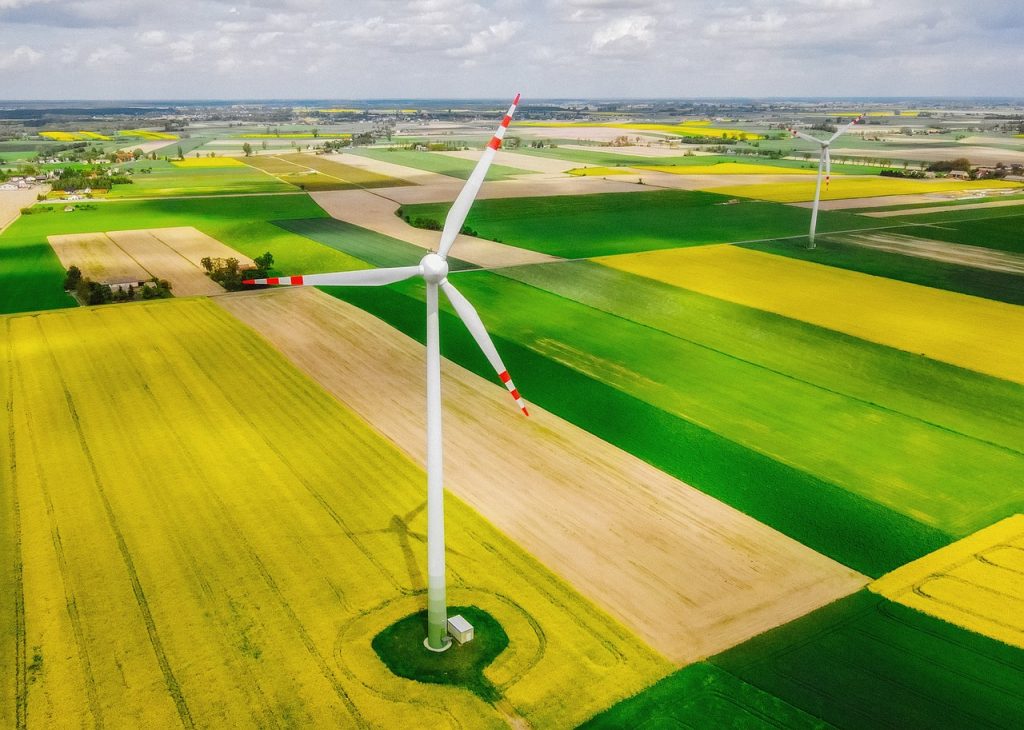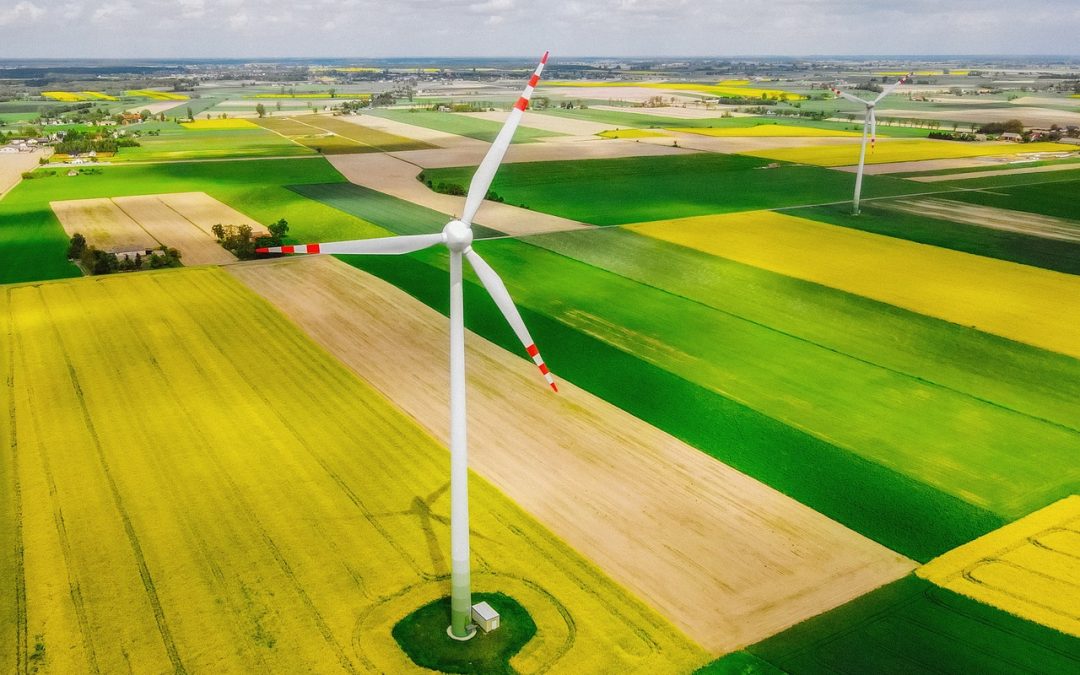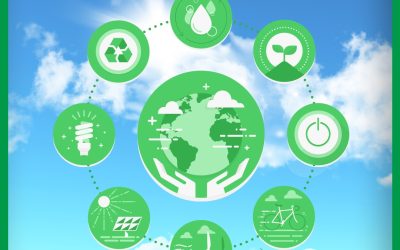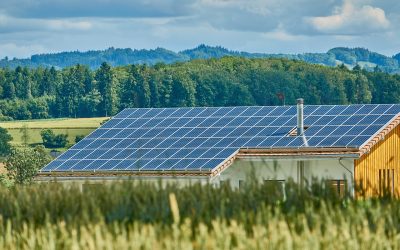Imagine a world where energy is generated without noise or harmful pollution. Picture a serene landscape with wind turbines silently spinning and solar panels quietly absorbing the sun’s rays. It may seem like a distant dream, but the concept of silent and non-polluting energy production is not far-fetched. In this article, we will explore the advancements in renewable energy technologies that are bringing us closer to this ideal, discussing their benefits and potential impact on our environment and daily lives. Get ready to discover a greener, cleaner, and quieter future of energy production.

Overview of Silent and Non-polluting Energy Production
Silent and non-polluting energy production is a crucial aspect of our transition towards a sustainable future. As the demand for energy continues to rise, it is becoming increasingly important to explore alternative sources that not only provide a stable supply but also minimize environmental harm. This article will provide an overview of various types of silent and non-polluting energy sources, their advantages and disadvantages, as well as the advancements and impacts in this field.
Importance of Silent and Non-polluting Energy Production
The importance of silent and non-polluting energy production cannot be overstated. Traditional energy sources, such as fossil fuels, pollute the air, contribute to climate change, and are unsustainable in the long run. The adoption of silent and non-polluting energy sources not only helps reduce air and noise pollution but also combats climate change by reducing greenhouse gas emissions. Moreover, these sources play a crucial role in creating green jobs and promoting economic growth in the renewable energy industry.
Types of Silent and Non-polluting Energy Sources
There are several types of silent and non-polluting energy sources that have gained momentum in recent years. These include renewable energy sources like solar energy, wind energy, hydropower, geothermal energy, and biomass energy. Additionally, nuclear energy, hydrogen fuel cells, wave and tidal energy, biofuels, and hybrid and electric vehicles also contribute to the silent and non-polluting energy production landscape.
Renewable Energy Sources
Renewable energy sources are derived from natural processes that are replenished over time. These sources offer a sustainable and endless supply of energy without causing harm to the environment. Let’s delve into some of the most prominent renewable energy sources.
Solar Energy
Solar energy harnesses the power of the sun using photovoltaic panels or concentrated solar power systems. It is a clean and abundant source of energy that can be used to generate electricity and heat. Solar energy is particularly effective in sunny regions and has the potential to significantly reduce dependence on traditional energy sources.
Wind Energy
Wind energy utilizes the force of wind to generate electricity through wind turbines. Wind farms are being increasingly deployed in various locations, both onshore and offshore, to tap into this renewable resource. Wind energy has the advantage of being cost-effective, scalable, and widely available.
Hydropower
Hydropower harnesses the power of flowing water to generate electricity. It involves the construction of dams or turbines in rivers or streams. Hydropower is a reliable and widely used renewable energy source that provides a consistent supply of electricity. However, it can significantly impact ecosystems and habitats if not implemented carefully.
Geothermal Energy
Geothermal energy utilizes the heat from the Earth’s core to generate electricity and heat buildings. It taps into underground reservoirs of steam or hot water. Geothermal energy is clean, reliable, and available 24/7, making it a promising source of silent and non-polluting energy.
Biomass Energy
Biomass energy utilizes organic matter, such as agricultural waste, wood pellets, or dedicated energy crops, to generate heat or electricity. It is a renewable source of energy that can help reduce dependence on fossil fuels, especially in the heating and transportation sectors.

Nuclear Energy
Nuclear energy is derived from the process of nuclear fission, which involves splitting atoms to release a large amount of energy. It is a controversial source of energy due to concerns over safety and radioactive waste management. However, it also offers several advantages.
How Nuclear Energy Works
In nuclear power plants, controlled nuclear reactions occur, producing heat that is used to generate steam. This steam then drives turbines to produce electricity. Nuclear power plants require a significant initial investment but can generate a large amount of energy without producing greenhouse gas emissions.
Advantages of Nuclear Energy
Nuclear energy has a higher energy density compared to renewable energy sources, allowing a smaller physical footprint to generate a substantial amount of electricity. It also provides a stable and reliable energy supply, making it a valuable asset for baseload power generation. Additionally, nuclear power plants can operate continuously for long periods without the need for frequent refueling.
Disadvantages of Nuclear Energy
One of the major disadvantages of nuclear energy is the issue of radioactive waste disposal. Radioactive waste remains hazardous for thousands of years and requires careful management. Moreover, the potential for nuclear accidents and the associated environmental and health risks poses a significant concern. Nuclear energy also faces public resistance due to these safety concerns.
Hydrogen Fuel Cells
Hydrogen fuel cells are devices that convert the chemical energy of hydrogen and oxygen into electrical energy without any combustion or pollution. They offer a promising solution for clean and efficient power generation.
Working Principle of Hydrogen Fuel Cells
Hydrogen fuel cells work by passing hydrogen gas through an anode, while oxygen is passed through a cathode. The catalyst at the anode separates hydrogen into protons and electrons, with the protons passing through an electrolyte to the cathode. The electrons, however, cannot pass through the electrolyte. Instead, they travel through an external circuit, creating an electric current. At the cathode, the oxygen, protons, and electrons combine to form water, which is the only byproduct of the reaction.
Advantages of Hydrogen Fuel Cells
Hydrogen fuel cells offer several advantages. Firstly, they produce electricity without generating any harmful emissions, as water is the only byproduct. Secondly, hydrogen can be produced from a variety of sources, including renewable energy, making it a versatile and potentially sustainable energy carrier. Hydrogen fuel cells have high energy efficiency and can be used in a range of applications, including transportation and stationary power generation.
Challenges in Implementing Hydrogen Fuel Cells
The implementation of hydrogen fuel cells faces several challenges. Firstly, the production and storage of hydrogen pose technical and logistical difficulties. Secondly, the high costs associated with fuel cell technology and the limited infrastructure for hydrogen refueling stations hinder widespread adoption. However, ongoing research and development efforts aim to address these challenges and make hydrogen fuel cells a viable and widely accessible energy solution.

Wave and Tidal Energy
Wave and tidal energy harness the power of ocean waves and tidal currents to generate electricity. These renewable energy sources offer huge potential for clean and predictable power generation in coastal regions.
Harnessing Energy from Waves
Wave energy devices capture the energy from ocean waves using various technologies, such as oscillating water columns, point absorbers, or overtopping devices. As waves move, they transfer kinetic energy to these devices, which then convert it into electricity. Wave energy has the advantage of being highly predictable and not relying on weather conditions, making it a reliable source of power.
Harnessing Energy from Tides
Tidal energy generation involves the use of turbines or barrages in areas with large tidal ranges. As the tides ebb and flow, the movement of water drives the turbines, generating electricity. Tidal energy is highly predictable and has the advantage of being a continuous and reliable source of power.
Benefits and Limitations of Wave and Tidal Energy
Wave and tidal energy offer several benefits, including being a clean, abundant, and predictable source of power. They have the potential to provide significant energy generation in coastal areas and reduce dependence on fossil fuels. However, these technologies are still in their early stages of development, facing challenges in terms of high costs, limited technological maturity, and potential environmental impacts, such as marine habitat disruption.
Biofuels
Biofuels are derived from organic matter, such as plants, algae, or agricultural waste, and can be used as a substitute for fossil fuels. These renewable energy sources offer a viable alternative for transportation and heating.
Bioethanol
Bioethanol is a biofuel produced from the fermentation of sugars, primarily derived from feedstocks like corn, sugarcane, or cellulosic biomass. It can be blended with gasoline and used as a fuel for vehicles. Bioethanol is a widely used biofuel, with the potential to reduce greenhouse gas emissions and promote energy independence.
Biodiesel
Biodiesel is produced from vegetable oils, animal fats, or recycled cooking grease. It can be used as a diesel fuel substitute in transportation. Biodiesel has the advantage of being biodegradable and emits fewer harmful pollutants compared to conventional diesel fuel.
Advantages and Disadvantages of Biofuels
Biofuels offer several advantages. They are renewable, reduce greenhouse gas emissions compared to fossil fuels, and can contribute to rural development and agricultural diversification. However, biofuel production requires significant amounts of land, water, and energy, which may have environmental implications. Additionally, the cultivation of biofuel feedstocks can compete with food crops, potentially impacting global food security.
Hybrid and Electric Vehicles
Hybrid and electric vehicles are gaining popularity as an effective means to reduce transportation emissions and dependence on fossil fuels.
Hybrid Vehicles
Hybrid vehicles combine an internal combustion engine with an electric motor and battery system. They offer improved fuel efficiency and lower emissions compared to conventional vehicles. Hybrid vehicles are an intermediate step towards fully electric vehicles and have proven to be a practical and economical option for many drivers.
Electric Vehicles
Electric vehicles (EVs) are powered by rechargeable batteries and electric motors. They produce zero tailpipe emissions and offer a sustainable transportation solution. EVs are becoming increasingly affordable, and advancements in battery technology are extending their driving range, making them a viable option for reducing greenhouse gas emissions from the transportation sector.
Pros and Cons of Hybrid and Electric Vehicles
Hybrid and electric vehicles come with various pros and cons. They offer reduced emissions, improved fuel efficiency, and potential savings on fuel costs. However, the availability of charging infrastructure, limited driving range for EVs, and higher upfront costs remain challenges for widespread adoption. Nonetheless, government incentives, technological advancements, and increasing consumer demand are likely to drive the growth of hybrid and electric vehicles.
Advancements in Silent and Non-polluting Energy Production
Technological advancements play a vital role in the development and implementation of silent and non-polluting energy production solutions. Let’s explore some of the key advancements in this field.
Technological Innovations
Renewable energy technologies have witnessed significant advancements in recent years. Solar panels and wind turbines, for example, have become more efficient and cost-effective. The development of advanced materials, improved manufacturing processes, and innovative designs have contributed to the increased performance and accessibility of silent and non-polluting energy solutions.
Battery Storage Solutions
Battery storage is crucial for maximizing the utilization of intermittent renewable energy sources like solar and wind. Advancements in battery technology have led to more efficient and cost-effective energy storage systems, enabling the smooth integration of renewable energy into grids and providing backup power during periods of low generation. Battery storage has the potential to revolutionize the energy landscape by storing excess renewable energy for use when the demand is high.
Smart Energy Systems
The development of smart energy systems has enabled better management and optimization of energy supply and demand. Smart grids, for example, incorporate advanced sensors, software, and communication technologies to monitor and control the flow of electricity. This technology allows for real-time adjustments based on consumer demand, renewable energy availability, and pricing, ensuring an efficient and reliable energy system.
Impacts of Silent and Non-polluting Energy Production
Silent and non-polluting energy production has far-reaching impacts on various aspects of our society and the environment. Let’s explore some of the key impacts.
Reduction in Air and Noise Pollution
One of the most significant benefits of silent and non-polluting energy production is the reduction in air and noise pollution. By moving away from fossil fuels, which release harmful pollutants and greenhouse gases when burned, we can improve air quality and mitigate the negative health impacts associated with pollution. Additionally, renewable energy technologies operate silently, minimizing noise pollution and creating a more pleasant living environment.
Combatting Climate Change
Silent and non-polluting energy sources play a crucial role in combatting climate change. By reducing greenhouse gas emissions, particularly carbon dioxide, they contribute to mitigating the impacts of rising global temperatures. The adoption of renewable energy and low-carbon technologies is instrumental in achieving emissions reduction targets outlined in international agreements such as the Paris Agreement.
Creating Green Jobs
The transition to silent and non-polluting energy production also presents opportunities for job creation. The renewable energy industry has experienced significant growth, creating employment opportunities in manufacturing, installation, operations, and maintenance. Green jobs not only contribute to the economy but also foster sustainable development and promote a more equitable society.
Barriers to Silent and Non-polluting Energy Production
While the benefits of silent and non-polluting energy production are clear, several barriers hinder its widespread adoption. Let’s discuss some of the key barriers in this field.
High Initial Costs
Silent and non-polluting energy technologies often come with high initial costs, which can pose a barrier to their deployment. The installation of solar panels, wind turbines, or other renewable energy systems requires significant upfront investments. However, it is important to consider the long-term economic benefits and cost savings associated with these technologies, as they often outweigh the initial investment.
Lack of Infrastructure
The lack of adequate infrastructure is another barrier to adoption. For example, in the case of electric vehicles, the limited availability of charging stations can deter potential buyers. Similarly, the development of offshore wind farms requires the installation of specialized infrastructure, such as transmission cables and subsea foundations. The expansion and enhancement of infrastructure are necessary to support the widespread implementation of silent and non-polluting energy solutions.
Resistance from Fossil Fuel Industries
The fossil fuel industry has a vested interest in maintaining its dominance in the energy sector. As a result, there may be resistance to the transition towards silent and non-polluting energy production. This resistance can manifest in lobbying efforts, misinformation campaigns, or reluctance to invest in renewable energy projects. Overcoming such resistance requires policy support, public awareness, and a clear understanding of the long-term benefits of transitioning to sustainable energy sources.
In conclusion, silent and non-polluting energy production is essential for a sustainable and environmentally-friendly future. Renewable energy sources, nuclear energy, hydrogen fuel cells, wave and tidal energy, biofuels, and hybrid and electric vehicles offer viable alternatives to traditional energy sources. Technological advancements, such as battery storage solutions and smart energy systems, continue to drive improvements in this field. The impacts of silent and non-polluting energy production are far-reaching, including the reduction of air and noise pollution, combatting climate change, and the creation of green jobs. However, barriers such as high initial costs, lack of infrastructure, and resistance from fossil fuel industries must be addressed to accelerate the transition towards silent and non-polluting energy production. By embracing these alternative energy sources, we can move closer to a sustainable and cleaner future for generations to come.










